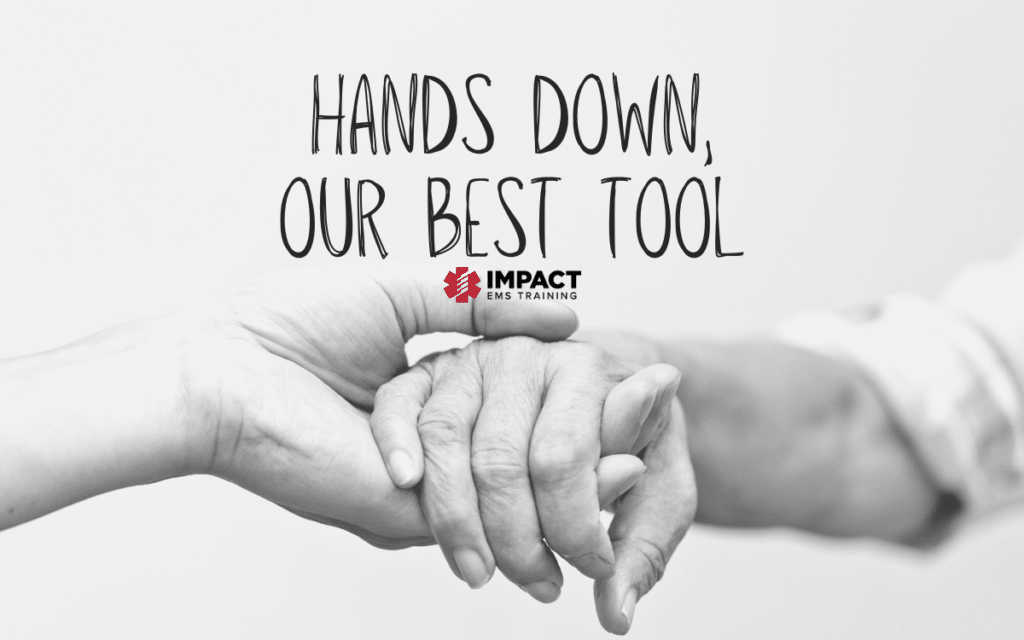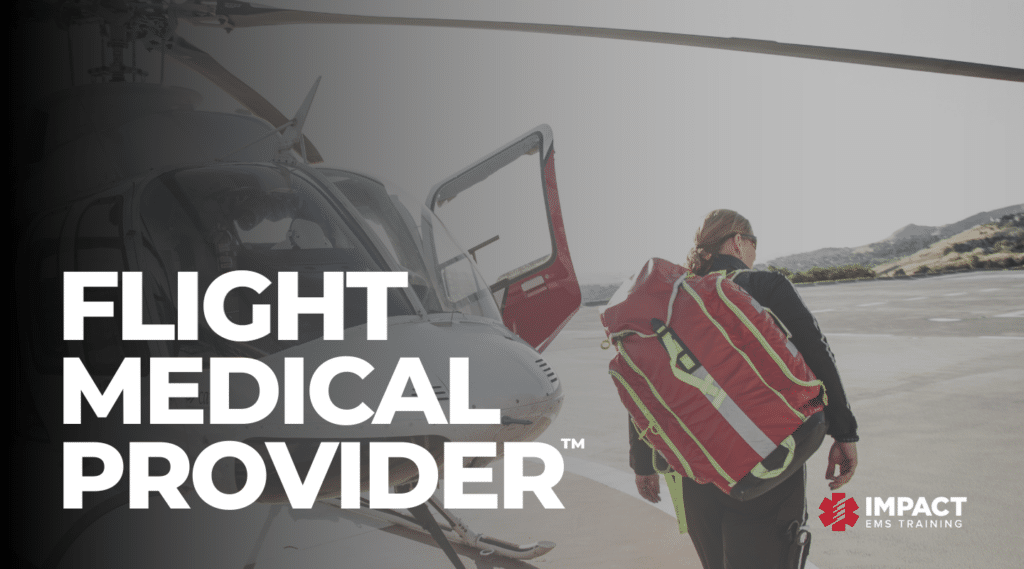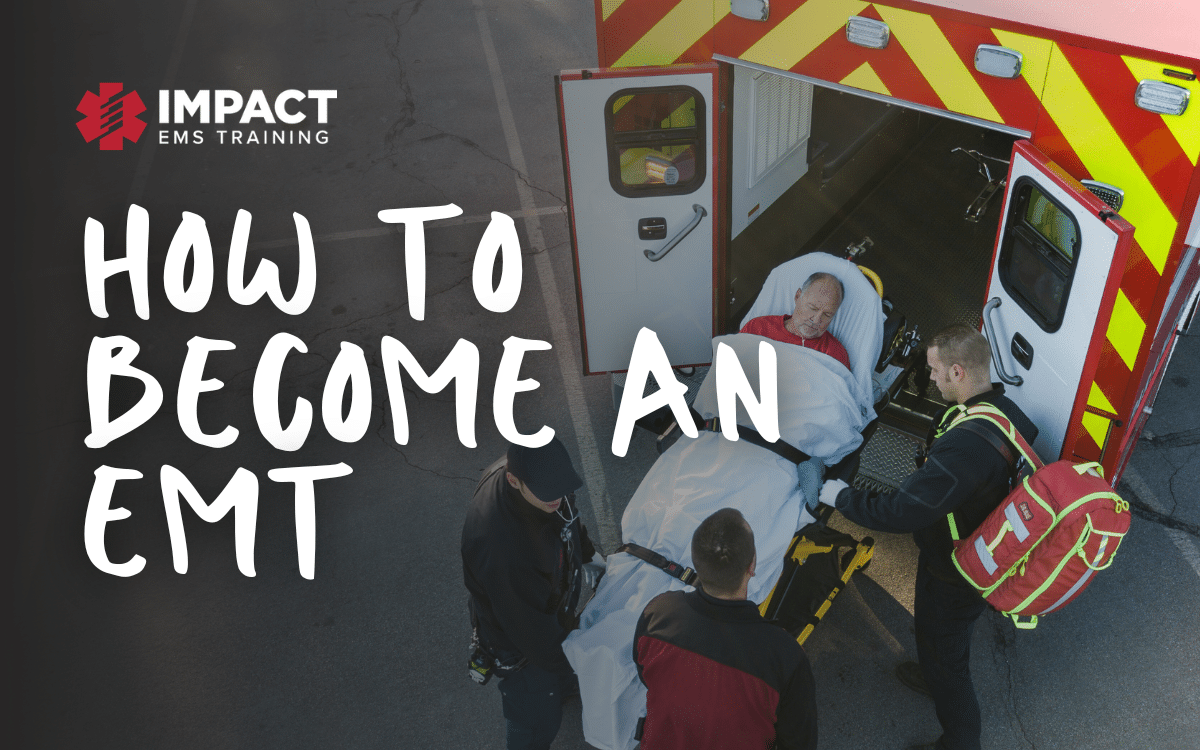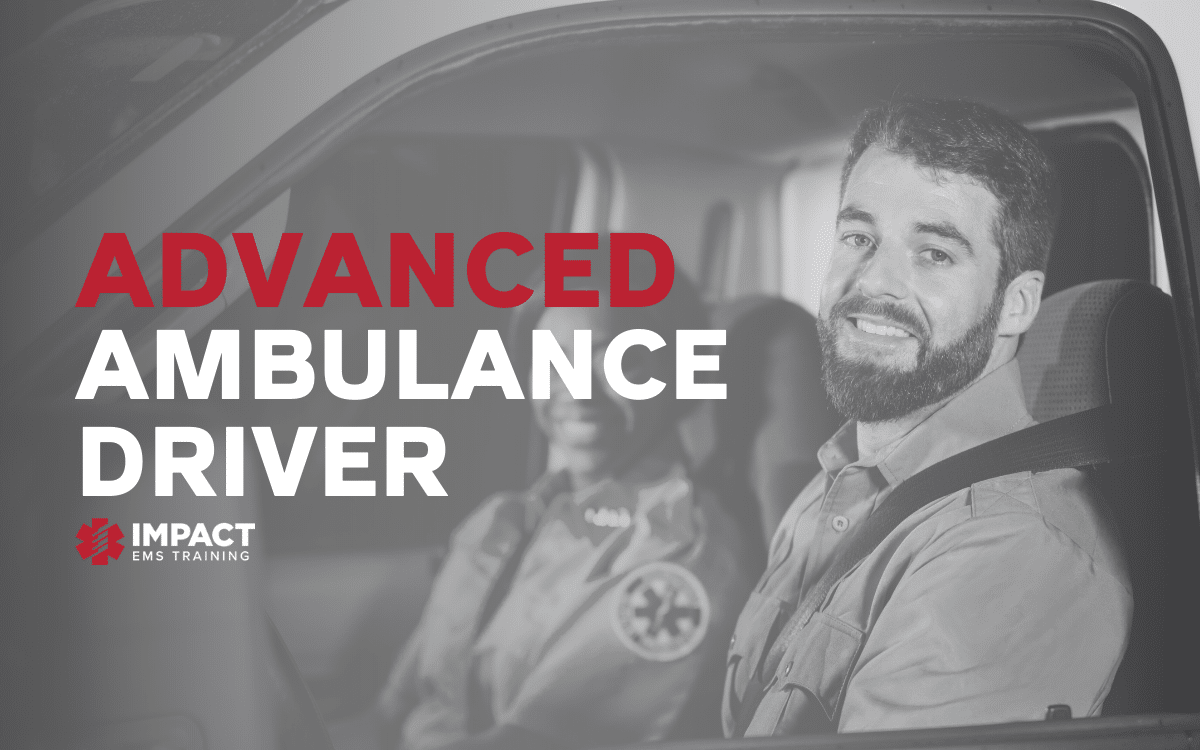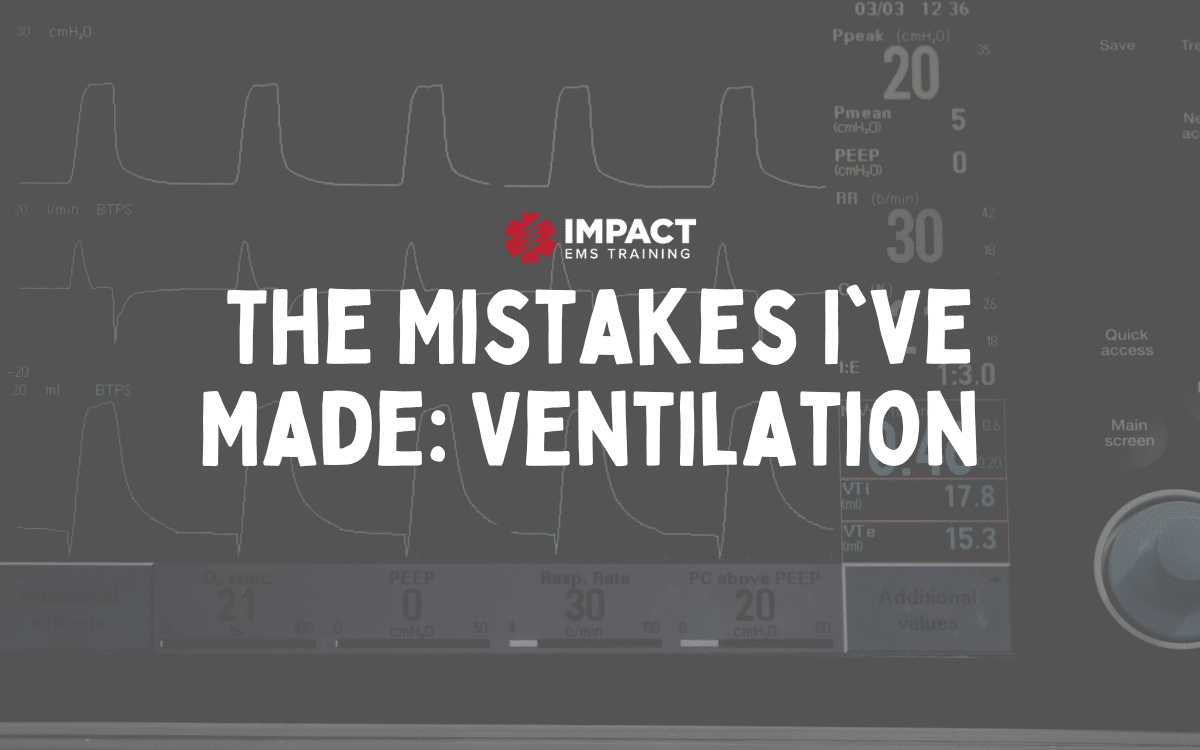Whether you work in the back of an ambulance, a helicopter, or a hospital, you likely have many tools to assist you in assessing and treating your patient. Tools such as monitors, a stethoscope, dopplers, thermometers, ultrasound units, glucometers and iStat machines, TOCO monitors, and endless imaging devices. Healthcare has created advanced technology for looking into, listening to, and measuring every nook and cranny of the human body.
But it turns out that our most effective tools for assessing and treating our patients are items void of technology, requires no batteries or charging, and come free with the purchase of every paramedic, nurse, and physician: our hands!
I have observed that many healthcare folks, especially those of us in the fast-paced environments of emergency and critical care, tend to lose touch with our patients’ humanity. We see them as a task to be managed, a problem that we find the solution for.
A ventilator to manage. Medications to titrate. A wound to address.
Our most critical patients require in-depth, broad thinking that pieces together an intricate web of symptoms, labs, vitals, and machine readouts. At the same time, we manage our high-risk environment of an 85mph truck on a county highway or a helicopter defying gravity. Our minds turn someone’s mother, someone’s husband, someone’s whole world into a checklist.
Our patients need us at our clinical best. But they also need us at our soul’s best. We are more than robots fixing broken bodies. We are creatures of love and care; we cannot lose that when we zip up our boots.
Remember to use your hands. I find that when I take just 20 seconds to use my hands, I can gather a whole host of usable information. I can palpate a radial pulse and simultaneously feel for warmth, edema, a tremor, strength, and turgor. When I’m in the cramped, dark helicopter, I can put my palms flat on a mechanically ventilated patient’s chest to feel for chest rise and compare the two sides. I can feel the speed of the breath cycle. I can feel if my patient is cold or shivering or febrile or diaphoretic.
*Don’t burn me at the stake for this one*
Take your gloves off. Hold the weathered hand of your STEMI patient as you look into his eyes to tell him it’s okay to be scared. Make a shadow puppet in the shine of your flashlight to distract your pediatric patient from her pain. Hug the patient’s loved one as you tell them the care plan. Let your patients and their loved ones see that you, too, are human. They already know you are smart; they can see that in the way you manage your patient. But it’s time to restore humanity in our practice (appropriately, of course).
Take time to reflect on your last several patient encounters and do some intentional introspection. Were you cold and distant from your patient? Were there ways you could have improved therapeutic communication? Have you become so fixated on not missing your key performance indicators that you’ve lost the ability to see your patient as more than a chart?
Make a plan for how you’ll work on making yourself a more empathetic, hands-on practitioner. You spend hours every week listening to podcasts, reading articles, and practicing critical skills. Be sure you develop your ability to connect with your patient through human touch and connection.
I think you’ll find that you’re more fulfilled when you practice this way, too.
Impact EMS offers accredited certification and refresher courses in one trusted location. Fully prepare for certification exams and maintain licensure with skill building credits.

